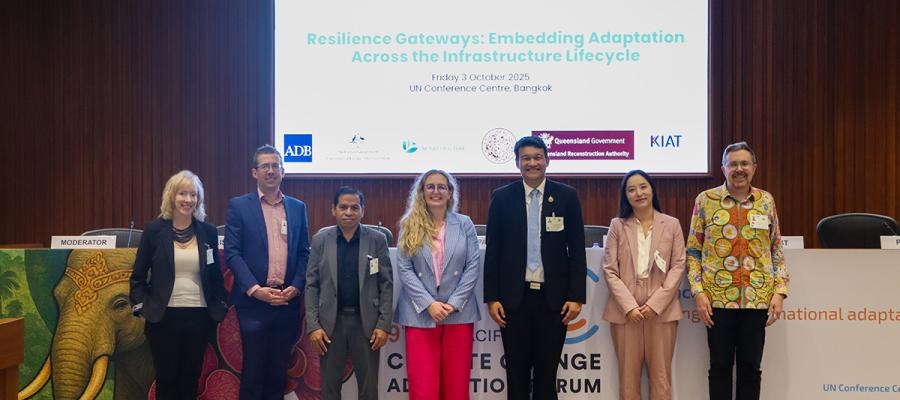If you are interested in partnering with us, please get in touch. Using P4I's flexible, innovative tools and diverse global expertise, we are confident we can design a response that is tailored to your needs.


Climate-related hazards cost the Asia-Pacific region an average of US$ 924 billion annually—equivalent to 2.9% of regional GDP. If global temperatures rise by 1.5°C – 2.0°C, these losses could climb to US$ 953–980 billion, threatening lives, economies, and ecosystems.
While developers may baulk at the upfront costs of integrating resilience into infrastructure (sometimes an increase of 3–4%), the return on investment can be up to four times higher—by preventing disruptions to critical transport, energy, and manufacturing systems that underpin sustainable growth in this region.
The good news? Resilience can be embedded throughout the infrastructure lifecycle—from scoping and planning to financing and delivery. At the 9th Asia Pacific Adaptation Network (APAN) Climate Change Adaptation Forum, P4I convened a panel featuring senior government officials and experts from across the region including:
Speakers unpacked some of the ways in which Southeast Asian governments and development partners have been improving the resilience of infrastructure, from using cost-benefit analysis tools, to introducing climate resilient infrastructure standards and nature-based solutions, to building national capacity around accessing climate finance.
Here are 3 key takeaways from the panel experts:
Build a strong economic case by quantifying the cost of inaction, highlighting indirect benefits, and framing resilience as an investment—not a cost.
QRA uses a cost-benefit assessment tool called SAVi (Sustainable Asset Valuation Initiative) to support decision-making on infrastructure resilience. This has resulted in A$ 988 million in avoided reconstruction costs since 2013.
Embed resilience through existing systems to enhance buy-in and long-term sustainability
The Australia-funded KIAT program in Indonesia has worked directly within existing water utilities’ business plans to embed climate adaptation and resilience measures.
Mobilise and de-risk finance by leveraging tools like ASEAN sustainability bonds and public-private partnerships (PPPs) with incentives and guarantees to attract private capital.
Credible and bankable infrastructure pipelines, matching ASEAN’s sustainable debt standards, provide clear frameworks that help attract investments for PPPs and concessionaires. P4I supports this by working with transport and energy agencies across the region to strengthen upstream planning and improve access to climate finance.
As climate risks intensify, investing in resilient infrastructure is no longer optional. P4I continues to drive resilience across key sectors: strengthening power systems planning in Laos, enhancing port resilience through PPP capacity development at the ASEAN level, and supporting road transport resilience in Thailand with the Queensland Reconstruction Authority.
If you are interested in partnering with us, please get in touch. Using P4I's flexible, innovative tools and diverse global expertise, we are confident we can design a response that is tailored to your needs.
